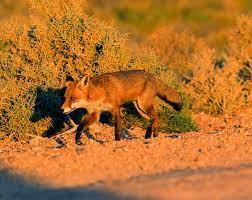New guide outlines best methods for Cat and Fox control
Luke Williams
20 June 2023, 3:40 AM
 Image: UNSW
Image: UNSWPoison baiting has emerged as the most effective way to control feral cat and fox numbers across Australia according to the Centre for Invasive Species Solution.
The two new planning guides released by the Centre for Invasive Species Solutions say that for both feral cats and foxes, poison baiting is the most cost-effective, efficient, and deadly way to deal with these pests.
The Planning Guide for Feral Cat Management says, “Feral cats are hard to detect, and eradication is extremely difficult unless you are on an island or within an appropriately fenced area and that un-desexed local domestic cats, kept as pets or farm cats, can provide a source population for future feral cats.”
The report acknowledges that trapping feral cats is labor-intensive and time-consuming.
“Generally, the technique is most suited to relatively small areas. Only use traps when you can check them within 24 hours of being set. Feral cats can be hard to trap.”
The option of ground shooting it says is “Best suited to localized feral cat problems in reasonably open areas and integrated with other control measures as feral cats are very hard to detect and shoot in areas of medium to high levels of vegetation.”
“Poison baiting is generally the most successful method suitable for feral cat control over a large area and landscape,” the guide says, while noting, “Feral cats prefer live prey and, unlike foxes and wild dogs, do not regularly scavenge for food. To be effective, baiting must be undertaken at a time when feral cats are food stressed and are more likely to scavenge for baits (for example, in winter or extended droughts)
Also discussed in the report was The Felixer an automated feral cat grooming trap that uses LiDAR beams to detect the movement and shape of a cat walking in front of the unit before firing a measured dose of toxin (1080) onto the fur of the feral animal.
It recommends revegetation and artificial habitat, such as appropriately designed nest boxes or floating islands, as well as keeping rabbit numbers low.
It comes as the Centre for Invasive Species has been making increasing noise about the impact of the two animals and is urging landowners and everyday citizens to do more.

Image: The Conversation.
“Recent research shows that feral cats and foxes kill and eat 697 birds, 510 million reptiles, 1.4 billion mammals, and well over 1.1 billion invertebrates every year,” said Gillian Basnett, National Feral Cat, and Fox Management Coordinator with the Centre or Invasive Species Solutions.
“Their populations are huge; it’s estimated that the number of feral cats ranges seasonally from 1.4 and 5.6 million, and the number of foxes is steady at 1.7 million. Fox and cat numbers vary across landscapes with high numbers in agricultural, peri-urban, and urban areas where there is more food.”
The council’s newly released Planning Guide for Fox Management in Australia says both trapping and shooting of foxes is labor intensive and time-consuming.
“Unlike cats, foxes are scavengers and readily take meat baits, so this is the most effective, broadscale method currently available for fox control.”
The guide says den fumigation is best for reducing localized populations.
Foxes also scavenge on fruit and vegetables, so the guide encourages all property owners to clean up waste vegetables, dropped fruit and animal carcasses.
Basnett from the Invasive Species Council says the stakes are high when it comes to reducing these numbers of these feral predators “These invasive animals threaten our native animals with extinction: at least 140 species are threatened by feral cats; foxes threaten 95 species”
“They also spread disease: feral cats spread toxoplasmosis, which can infect any animal or bird; it doesn’t discriminate between wallabies, bandicoots, or sheep".
“Together with another disease, Sarcocystis, toxoplasmosis spread by feral cats is estimated to cost farmers more than $12 million a year. Throw in predation by foxes, and you add a further $28 million in costs a year”, she said.
The guides outlined the following steps for dealing with a feral cat or fox problem need to carefully consider why and how they need to respond in a way that suits their specific situation.
“Select control measures that are the most humane, target-specific, and cost-effective available,” both guides conclude.




